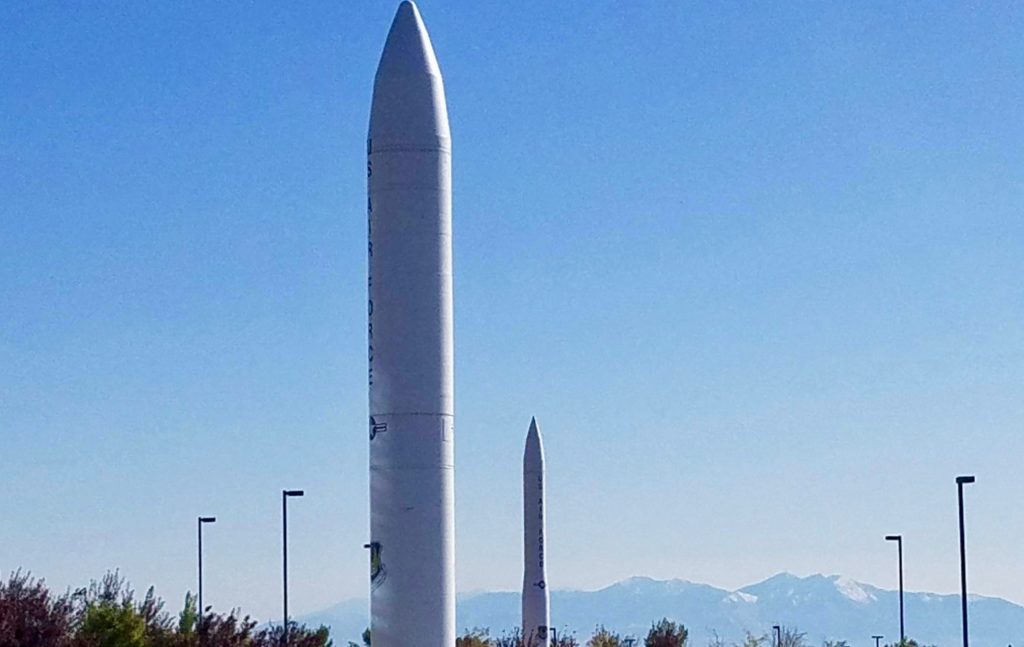
According to the Washington Post, The U.S. Defense Intelligence Agency (DIA) now says North Korea will be able to produce a “reliable, nuclear-capable ICBM” sometime in 2018.
In other words, by next year the deranged Kim Jong-un program will have moved from prototype to real production of an ICBM ballistic missile. As we previously reported, North Korea launched the first-ever successful test an ICBM missile on the 4th of July, and the ICBM is the kind of missiles they’d use to carry a nuclear war head in the event of a real attack.
As House Armed Services Committee Chairman Mac Thornberry (R-TX) stated:
“The apparent success of the July 4th test is an alarming development as North Korea accelerates its pursuit of being able to hold the United States at risk with nuclear weapons. I have grown increasingly alarmed that North Korea is acting with a greater sense of urgency than we are.”
“For some time, and especially during the last eight years, we have neglected the nation’s missile defenses. Now we face a growing threat with significant ground to make up. The House-passed National Defense Authorization Act makes considerable progress toward that goal, but we need everyone responsible in Congress and the Administration to take forceful, swift steps to see that the U.S. and our allies are protected.”
The Washington Post piece quoted Scott Bray of the Office of the Director of National Intelligence as saying,
“North Korea’s recent test of an intercontinental range ballistic missile — which was not a surprise to the intelligence community — is one of the milestones that we have expected would help refine our timeline and judgments on the threats that Kim Jong Un poses to the continental United States. This test, and its impact on our assessments, highlight the threat that North Korea’s nuclear and ballistic missile programs pose to the United States, to our allies in the region, and to the whole world. The intelligence community is closely monitoring the expanding threat from North Korea.”
As the Post article noted, atmospheric “reentry” is one of North Korea’s last hurdles—making sure their missile can pass through the upper atmosphere without destroying the nuclear warhead. Shockingly, that Long regarded as a formidable technological barrier could be reached sooner than later, with new tests “expected to take place within days.”
North Korea startled the world earlier this month with its successful July 4 test of a missile capable of striking parts of Alaska — the first such missile with proven intercontinental range. The launch of a two-stage “Hwasong-14” missile was the latest in a series of tests in recent months that have revealed startlingly rapid advances across some technical fields, from mastery of solid-fuel technology to the launch of the first submarine-based missile, current and former intelligence officials and weapons experts said.
All of this makes the continued development of the Ground-Based Midcourse Defense program (GMD) more critical than ever. As we’ve previously reported, the GMD is the only system that can protect the U.S. from the threat of ICBM-delivered nuclear weapons. It was developed in Alabama with Boeing as the prime contractor, but the Pentagon has discussed moving the program from Huntsville to bring it under the functional control of the U.S. Government. The loss of institutional knowledge and the reorganization of the GMD would no doubt compromise America’s security. As national security expert, Lorne Thompson wrote in an article for Forbes,
It seems there is only one step the Trump administration can take that would not increase the likelihood of war and materially improve the safety of the American homeland. That step is to accelerate and expand the modest missile defense system called Ground-based Midcourse Defense (GMD) that operates interceptors in Alaska and California.
As Alabama Congressman Mike Rogers, who serves on the House Armed Services Committee, concluded:
“I’m alarmed at North Korea’s urgency and our lack of it. North Korea is moving at a rapid pace to develop its ballistic missile capability, including ICBM capability. On other hand, we have been ignoring missile defense for eight years thanks to the previous Administration. And while I commend the Trump Administration for undertaking a Ballistic Missile Defense Review, I believe it is imperative that the Administration not wait for the final result of that study before it begins to improve our missile defense posture to counter the clearly rising threat. The President will have my full support to develop and deploy a “state of the art missile defense” as he committed to do during the campaign. Time is of the essence.”
Related: How Leftover Obama Appointees Are Threatening Our National Security












